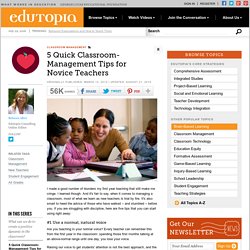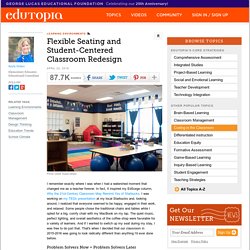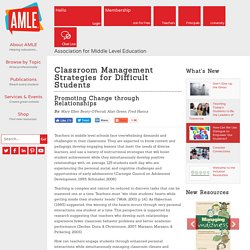

The Name of the Game is Communication. The Only Classroom Rules You'll Ever Need. If you’re looking for elaborate or decorative classroom management ideas, you won’t find them here. Though prevalent, such ideas are unnecessary, even counterproductive, for classroom management. On this site, we’re focused on only two things: 1. What works best. 2. The goal of classroom management is to eliminate distractions, disruptions, and poor behavior, so you are free to inspire your students. The results are happy and high achieving students. Anything that interferes with this goal, or doesn’t contribute to it, should be thrown out. Too many teachers chase the next great classroom management idea and are continually disappointed. In the meantime, they’re stressed and tired of dealing with behavior issues. An act of joy. So instead of chasing trends, why not focus on what is proven to work? And, most important, you’ll be able to focus your energies on what attracted you to teaching in the first place: the chance to make a lasting impression on your students.
5 Quick Classroom-Management Tips for Novice Teachers. I made a good number of blunders my first year teaching that still make me cringe.

I learned though. And it's fair to say, when it comes to managing a classroom, most of what we learn as new teachers is trial by fire. It's also smart to heed the advice of those who have walked -- and stumbled -- before you. If you are struggling with discipline, here are five tips that you can start using right away: #1 Use a normal, natural voice Are you teaching in your normal voice? Raising our voice to get students' attention is not the best approach, and the stress it causes and the vibe it puts in the room just isn't worth it.
You want to also differentiate your tone. . #2 Speak only when students are quiet and ready This golden nugget was given to me by a 20-year veteran my first year. So I tried it; I fought the temptation to talk. My patience paid off. . #3 Use hand signals and other non-verbal communication Flicking the lights off and on once to get the attention is an oldie but goodie. Flexible Seating and Student-Centered Classroom Redesign. I remember exactly where I was when I had a watershed moment that changed me as a teacher forever.

In fact, it inspired my EdSurge column, Why the 21st-Century Classroom May Remind You of Starbucks. I was working on my TEDx presentation at my local Starbucks and, looking around, I realized that everyone seemed to be happy, engaged in their work, and relaxed. Some people chose the traditional chairs and tables while I opted for a big, comfy chair with my MacBook on my lap. The quiet music, perfect lighting, and overall aesthetics of the coffee shop were favorable for a variety of learners. And if I wanted to switch up my seat during my stay, I was free to do just that.
Problem Solvers Now = Problem Solvers Later I'm a firm believer in keeping the focus on what's really important: the students. What the Research Says Everything I do in my classroom is based on research and best practices for kids. Simple in-class activities can boost performance. Classroom Redesign on a Budget. Classroom Management Strategies for Difficult Students. Teachers in middle level schools face overwhelming demands and challenges in their classrooms.

They are expected to know content and pedagogy, develop engaging lessons that meet the needs of diverse learners, and use a variety of instructional strategies that will boost student achievement while they simultaneously develop positive relationships with, on average, 125 students each day who are experiencing the personal, social, and cognitive challenges and opportunities of early adolescence (Carnegie Council on Adolescent Development, 1995; Schmakel, 2008). Teaching is complex and cannot be reduced to discrete tasks that can be mastered one at a time. Teachers must "win their students' hearts while getting inside their students' heads" (Wolk, 2003, p. 14).
As Haberman (1995) suggested, this winning of the hearts occurs through very personal interactions, one student at a time. Classroom management and relationship building Strategies for building relationships Building empathy Conclusion.